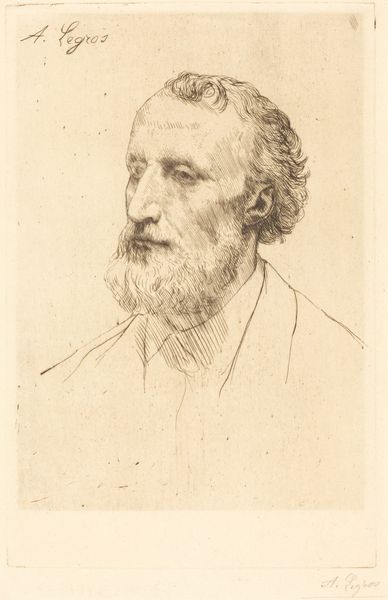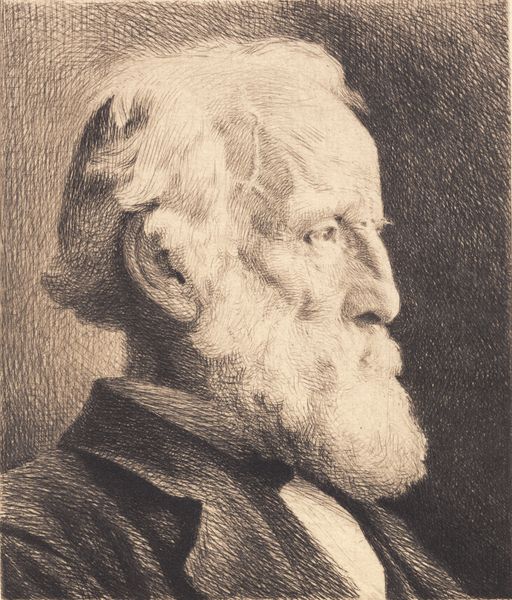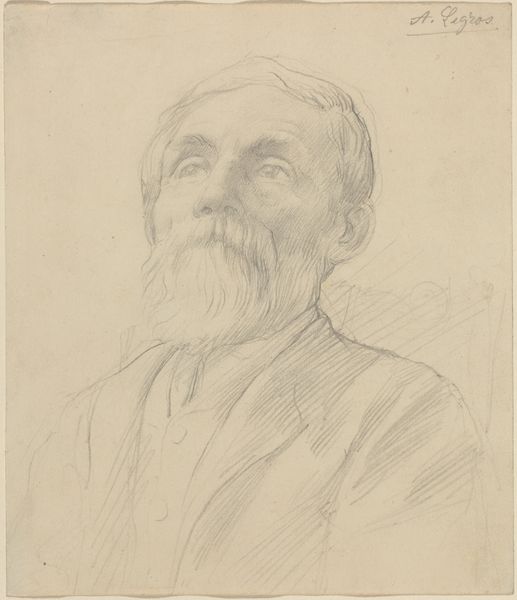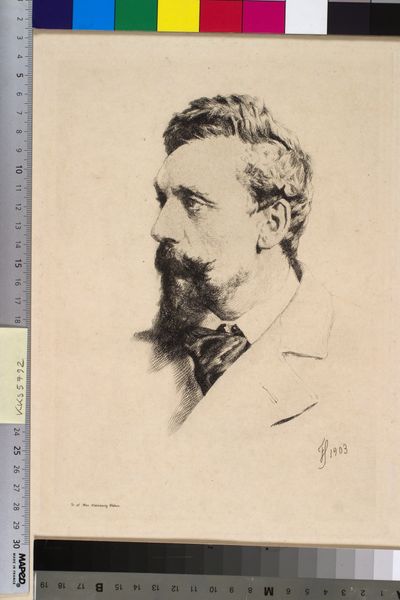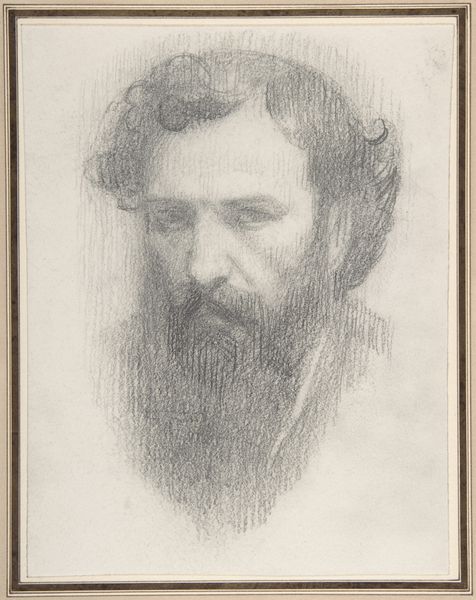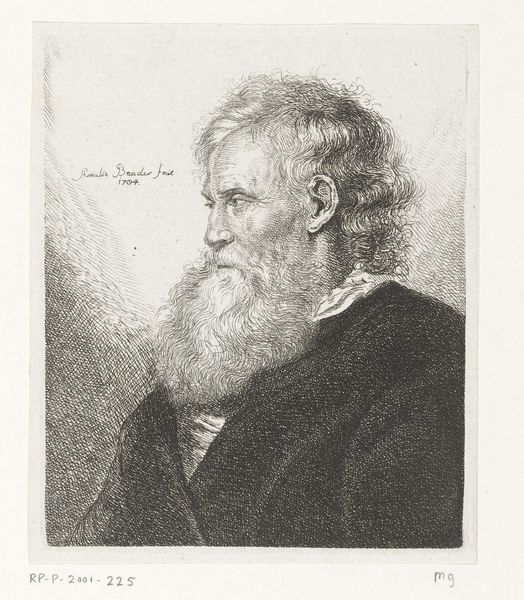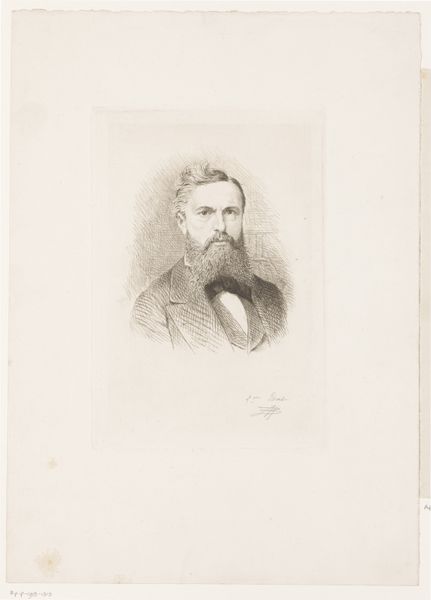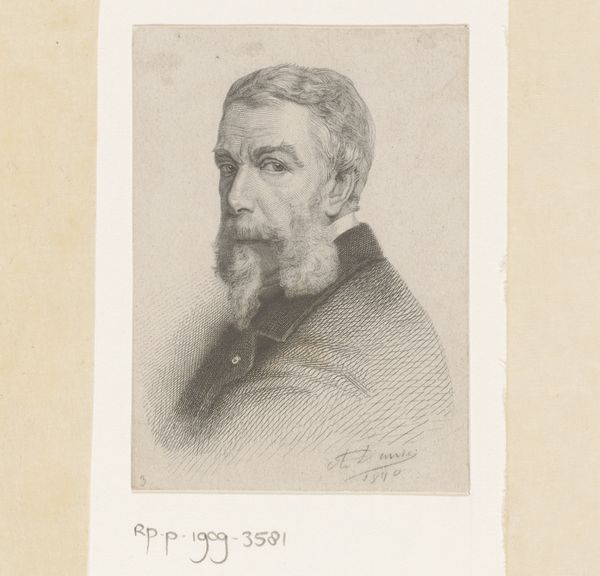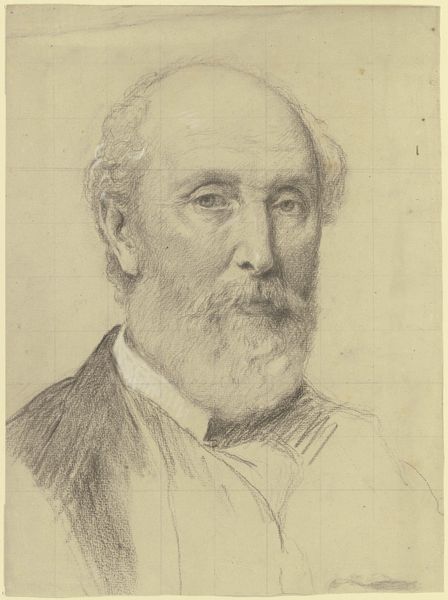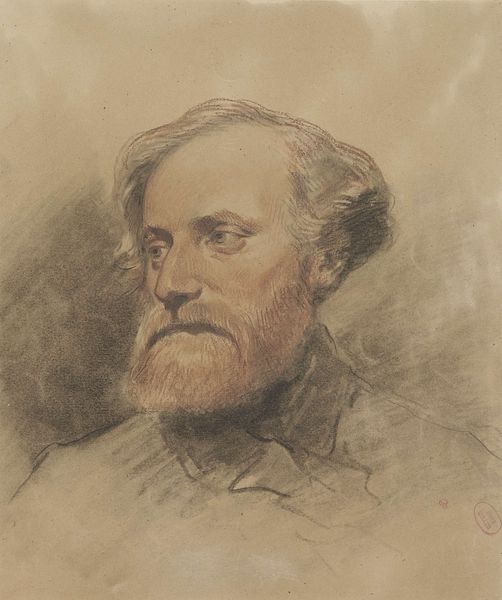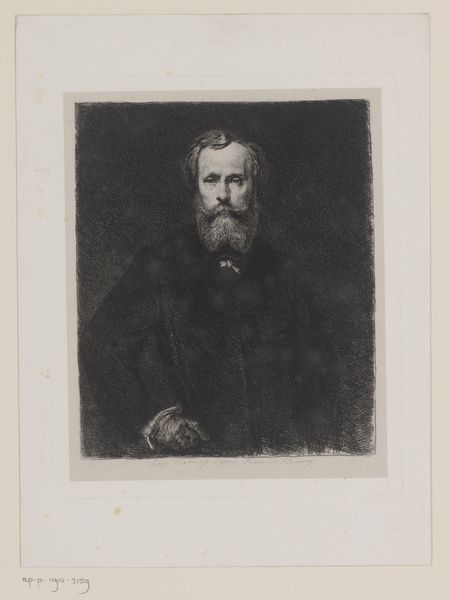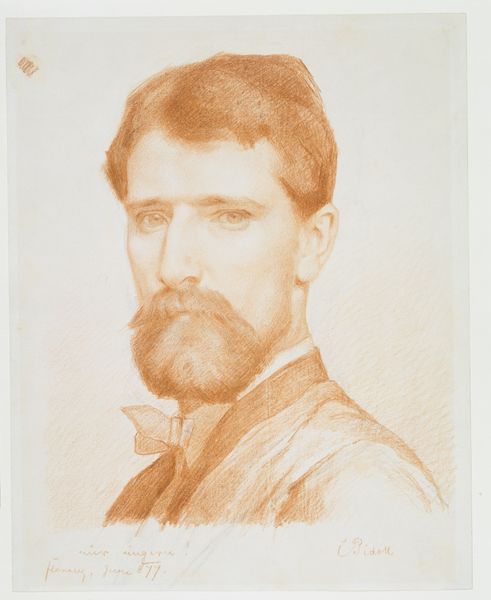
drawing, pencil, chalk, graphite, charcoal
#
portrait
#
drawing
#
charcoal drawing
#
pencil drawing
#
pencil
#
chalk
#
graphite
#
charcoal
#
academic-art
#
realism
Copyright: Public Domain
Curator: Ah, there he is! I think you'll agree, Otto Scholderer’s “Portrait of Dr. George Bird,” crafted around 1877, has quite a presence. It's rendered primarily in charcoal and pencil, but also shows the touch of graphite and chalk, giving it this wonderfully subtle tonal range. Editor: What immediately strikes me is how the unfinished quality—you can even see the grid lines underneath—adds a vulnerability. It's like we're catching him in a moment of becoming, you know? As if the essence of Dr. Bird is emerging before our eyes. Curator: Absolutely. The preparatory marks remind us that it’s a constructed image, a distillation of observation, and technique. A deliberate realism, bordering on the academic, one might say. But the softness of the rendering… Editor: Yes, softens the academic feel for sure. I'm drawn to his eyes, there's such humanity there. That beard… it is almost biblical. Beards in art often signify wisdom, maturity, even a sort of patriarchal authority. Is he about to impart ancient truths? Or just tell me about his aches and pains? Curator: (Laughing) A little bit of both, perhaps! Considering he’s a doctor, maybe it’s aches and pains first! But yes, his steady gaze is compelling. Think about the symbolic weight of physicians in the late 19th century, with the advancements in medicine and germ theory. He becomes an almost shamanistic figure. Editor: That’s it exactly! He has access to hidden knowledge, scientific secrets... knowledge that feels, in that time, akin to magic. And notice the details in the face are more precise than the gestural depiction of his jacket and body. It subtly pulls the eye to the portrait's focal point and anchors him into the field. Curator: Precisely. The unfinished nature of the torso focuses the weight of the composition upward. And technically speaking, the drawing, through shadow and highlights, displays the intellectual process of observation by Scholderer of the good doctor. Editor: This portrait embodies the moment, right before photography completely dominates portraiture. Artists trying to hold onto something they’re inevitably about to lose. Curator: A struggle to capture essence before it’s mechanized. Beautifully put! Well, this encounter certainly made me reflect anew on the complex tension between realism and something much deeper… Editor: Me too. Looking at it more closely now, I sense something hopeful, almost expectant. Maybe it's us, as viewers, who bring that expectation. Food for thought indeed!
Comments
No comments
Be the first to comment and join the conversation on the ultimate creative platform.

